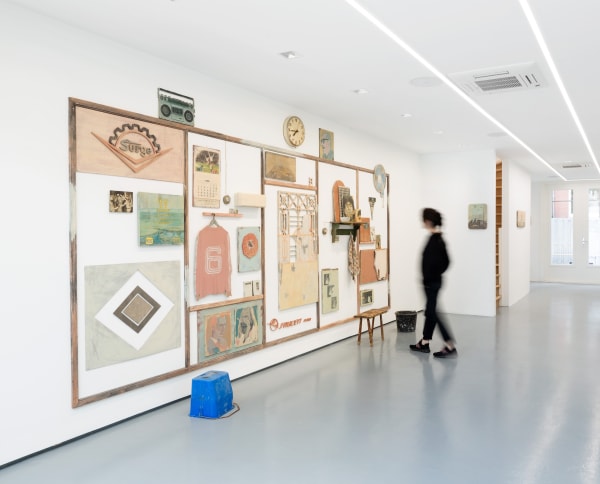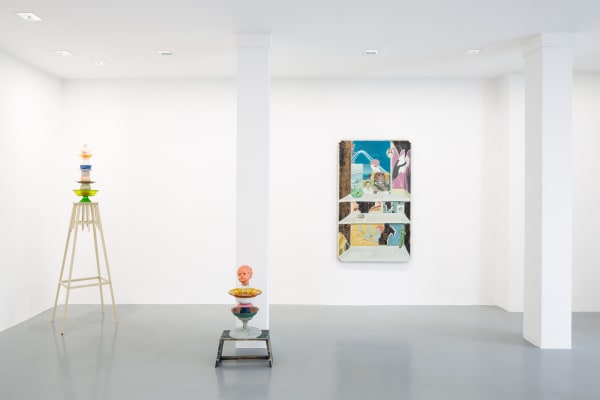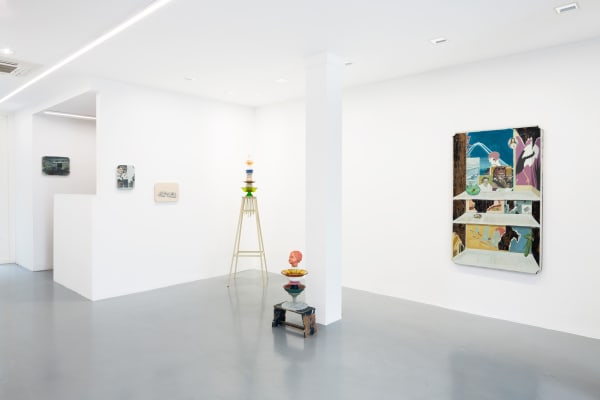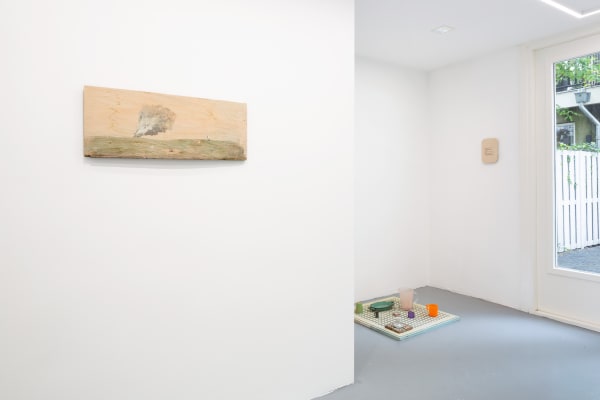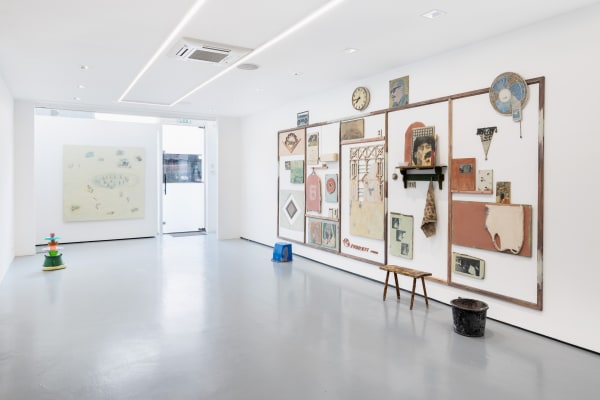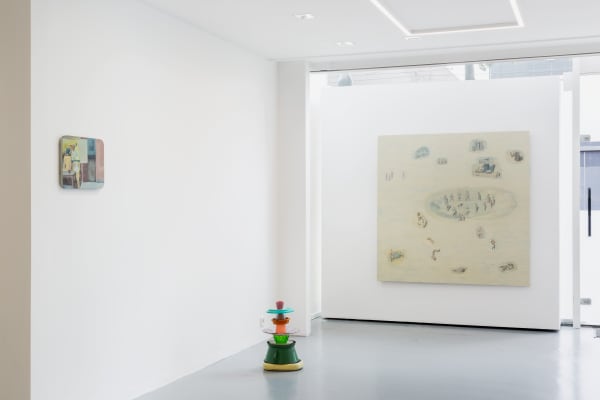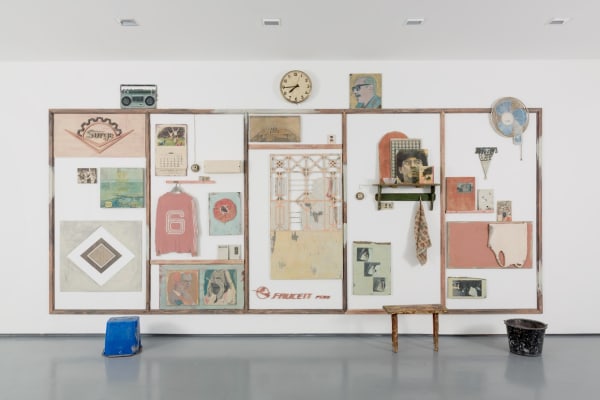Arturo Kameya: Grandma's Cooking Recipes
GRIMM is pleased to announce Grandma’s Cooking Recipes, a solo exhibition of new works by Arturo Kameya opening on July 17, 2020 at our Van Baerlestraat location in Amsterdam.
GRIMM is pleased to announce Grandma's Cooking Recipes, a solo exhibition of new works by Arturo Kameya opening on July 17, 2020 at our Van Baerlestraat location in Amsterdam. This is Kameya's first solo exhibition with the gallery.
Arturo Kameya invokes the idea of family recipes as a metaphor for inherited formulas of survival and political intervention passed down from generation to generation. In doing so, he questions which formulas should be passed down and which are best not repeated. Kameya's installations combine paintings and found objects to conjure three distinct narratives: a personal history, the history of Lima's urban subculture, and an account of politics in South American football. His works recreate these three narratives from their symbolic objects and locations, calling attention to the overlapping perspectives they offer. The moments of history that are presented in this exhibition merge themes of loss and defeat with expressions of celebration and resilience, bound together in a way that is at once universally understood and specific to the family, nation, and region they portray.
A two-dimensional painting of a kitchen shelf lined with jars and containers hangs above a dishrack of illustrated plates; this is a source of ingredients for family recipes, representing the kitchen of Kameya's grandmother. The artist's grandmother started what would become the family restaurant after she immigrated to Peru in the 1930s. She was the sole cook at the restaurant and refused to divulge her culinary secrets for fear that she would be replaced; when she passed all her recipes were lost. Although her daughters made attempts to recreate the recipes, they were never successful. This narrative presents a reversal to the notion of family heritage and poses the question: Is it best just to start over?
The same bittersweet quality is also significant in the tradition of Peru's Chicha culture, a subculture that developed in the urban neighborhoods of Lima to become a symbol of national pride. A grouping of paintings translated from 1980s tabloid covers feature titles such as, "The Pope Makes Contact with E.T." Kameya points to the role of these publications, known collectively as the Chicha press, providing a kind of cheap escapism for the working class through stories of the paranormal, football scandals, and pin-up girls. These publications historically served as a government tool for spreading misinformation, but have been embraced for their affordability and as a kind of guilty pleasure. In the Peruvian context, Chicha describes not only these tabloids but is associated with genres of regional music and art. Another series of small-scale paintings are windows into the city landscape of Lima, focusing on concrete football pitches used by the locals as sites for Chicha concerts, birthday parties, political rallies, and other gatherings. Class lines circumscribe Chicha as both a mode of defiance and an expression of social conditions that call for celebration as a way of coping with the realities of life.
Another work pictures the aftermath of the controversial match between Argentina and Peru during the second round of the 1978 FIFA World Cup. During this time both Peru and Argentina (as well as surrounding South American countries) were ruled by military dictatorships: political bodies that were highly invested in the spectacle of the 1978 World Cup. The game between Peru and Argentina-which allowed for Argentina (the host of the World Cup) to advance and ultimately win in a final match against the Netherlands- is widely viewed as having been rigged. The Peruvian team lost this monumental game in 6-0 defeat, and has never reached the same prominence. From this time, the loss has served as allegory for Peruvians on the futility of playing to win and altered the focus of football fans to alternate aspects of the sport such as the artistry of the players. Recounting this moment, Kameya incorporates images and text that allude to the politicization of football as a means for national and international dynamics to play out on the field.
Combining elements from entertainment, sports, and politics, Kameya reflects on how these spheres are interrelated and how they continue to be shaped by broken systems. This new body of work continues Kameya's practice of incorporating a mix of referential elements to create scenes reflecting on his personal experiences.
However, with this installation, Kameya has widened his conceptual scope to include intersecting perspectives on social and political developments. He draws elements from archival research and his memories, to create these small monuments, historical projections that question the inherited systems of today.
Opening: Friday July 17th, Van Baerlestraat 80, Amsterdam (NL)
With regards to covid-19, we kindly ask you to RSVP and choose a time slot: 4pm, 5pm, 6pm or 7pm.

